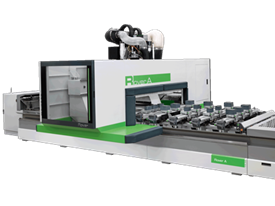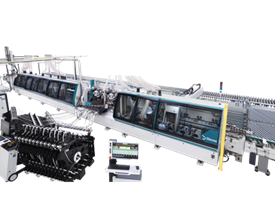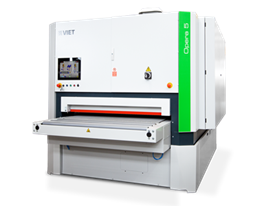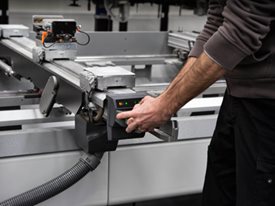In the changing business world, the concept of sustainable manufacturing has emerged as a beacon, illuminating the way to a greener future. This has assumed a central role in light of the critical need to solve pressing environmental challenges and reduce our ecological footprint. This talk delves into the basics of sustainable production and highlights its relevance in the present day. In addition, it explains five key trends that will influence the manufacturing industry in 2023.
Green manufacturing aims to produce goods with little environmental impact and minimal waste of scarce energy sources. Excessive waste, pollution, and depletion of resources are only some of the ecological repercussions of traditional manufacturing practices that emphasise the need for this approach.
The importance of this model goes beyond green concerns and into the realm of fiscal restraint. Even if it's financially beneficial in the short run, traditional production typically results in long-term liabilities like environmental harm and resource shortages. As a vital component of the contemporary global fabric, sustainable production promotes the values of moral stewardship and economic viability.
This article discusses five manufacturing sector trends to keep an eye on beyond 2023.
What is sustainable manufacturing, and why is it important
Sustainable manufacturing is a production strategy that maximises resource efficiency and moral labour practices while minimising harmful environmental effects. Given the present-day ecological issues, this strategy is essential. Traditional industrial practices often strain our planet by causing resource depletion and waste creation. This way of production puts a greater premium on environmentally friendly production processes that are in line with the urgent need to battle climate change and protect natural resources. Specifically, this approach preserves natural resources by reducing the amount of waste produced during the manufacturing process.
Beyond environmental considerations, sustainable production is important. It's a move in the direction of a circular economy, which emphasises reusing and recycling products to achieve environmental and economic benefits. Also, adopting sustainable production techniques stimulates innovation, creating better products that may be used in various fields. Sustainable or green manufacturing is essential to our modern society because of its economic and environmental advantages.
5 Key Trends in Sustainable Production
Here are the 5 key trends for sustainable, eco-friendly production that manufacturers should be aware of in 2023:
- Circular Economy: In a circular economy, resources are used for as long as feasible. This idea is gaining acceptance in the corporate sector. Businesses are beginning to realise the benefits of creating systems and products that can be quickly dismantled, repaired, and remanufactured as opposed to being discarded after their original usage. As more companies try to close the loop on their material flows, we anticipate seeing more of them embrace circular, sustainable business models. A more efficient and sustainable circular economy model can help decrease waste, preserve natural resources, and slow down climate change. As customers become more aware of the environmental impacts of their purchasing habits, the circular economy is likely to continue to gain appeal in the years to come.
- New Technology: Advances in clean technology will make it possible to create supply chains that are robust but more compact. Despite being substantial, the expenditures needed to innovate will be lower than those necessary to repair the harm done to the environment and the expenses associated with maintaining outdated production techniques. By giving individuals the skills to manage time-consuming, repetitive labour and freeing them up to concentrate on important tasks, new technology may also increase employee productivity and creativity. Through remote employment, technology is already assisting businesses in attracting qualified non-local personnel. Improved customer service and team cooperation are made possible through quicker communication technologies. The majority of workers believe that new technologies will also increase their health and safety.
- Powerful Data Analytics: While historical systems are capable of gathering and organising data, they lack modern systems' robust reporting and data analytics tools. With today's technologies, you can make important company decisions about finances, potential investments, sales, marketing, and more by using tools like integrated analytics. This enables you to swiftly and at any level, from the production division up to the executives, make data-driven choices. Software with machine learning capabilities, for instance, may analyse your maintenance information and forecast when problems are likely to occur. This aids in the optimisation of maintenance plans so that you may repair or replace components before they lead to issues.
- Restore to Reduce Risk: Over the last several years, businesses have seen disruptions in their supply chains as well as increases in fuel and transportation costs, highlighting the drawbacks of globalisation. Circular economy practices will be increasingly used on a local and regional level to facilitate reshoring. By reducing their reliance on imported resources, businesses may lessen the risks related to delivery delays, spoiled goods, price volatility, and supply shortages.
- The transition from Intent to Impact: Several businesses have set climate commitments. It has not been simple to produce the intended effect, nevertheless. Despite using remarkable sustainability practices, businesses find it difficult to fully achieve the lofty goals they have set for themselves. The whole value chain, not just a few isolated enterprises, must make the transition to a net-zero path to manage emissions. However, related firms are now apprehensive about change and unclear about how the necessary funding, policies, and innovation will manifest.
Conclusion
The urgency of our environmental problems is what is driving the industry's transition to green manufacturing in 2023, not just a trend. Traditional industrial tactics based on unfettered resource usage and a lack of concern for ecological consequences no longer work in a society that places a premium on ethics and responsibility.
Manufacturers are establishing a new benchmark for industrial production as they progressively use the above key techniques for sustainable production. This transformational journey denotes not only a change in procedures but also a shift in perspective, emphasising the need for resource conservation and renewal for long-term success.
Businesses, consumers, and communities all play a part in the interwoven effort that is sustainable manufacturing. We can hasten the adoption of these trends and steer global production in a more sustainable direction by encouraging cooperation and innovation. We can create a future where production and preservation live together, protecting the health of our world for future generations, by embracing these trends.



.png)





 Worldwide
Worldwide
 Italia
Italia
 United Kingdom
United Kingdom
 Россия
Россия
 France
France
 中国
中国
 Asia
Asia
 Deutschland
Deutschland
 España
España
 Schweiz
Schweiz
 North America
North America
 India
India
 Australia & New Zealand
Australia & New Zealand
 Türkiye Cumhuriyeti
Türkiye Cumhuriyeti
 Middle East
Middle East
 Brasil
Brasil